
Publication mail agreement #43734062 INSIDELOGISTICS.CA CANADA’S SUPPLY CHAIN MAGAZINE NOW INCLUDING: Canadian Shipper OCTOBER 2023 Turnkey Media Solutions Inc. 48 Lumsden Crescent, Whitby, Ontario, Canada L1R 1G5 › CARM preparedness › How to succeed at reverse logistics › Designing for data ALL IN THE FAMILY Mikhaiel Logistics thrives on care and trust HOW A 4PL CAN OPTIMIZE YOUR SUPPLY CHAIN SEE PAGES 14-15
• Award-winning LTL with daily scheduled CAN & USA departures
• Priority PlusTM overnight service between Toronto & select USA cities
• Remote and cabin crew prioritizing safety & comfort
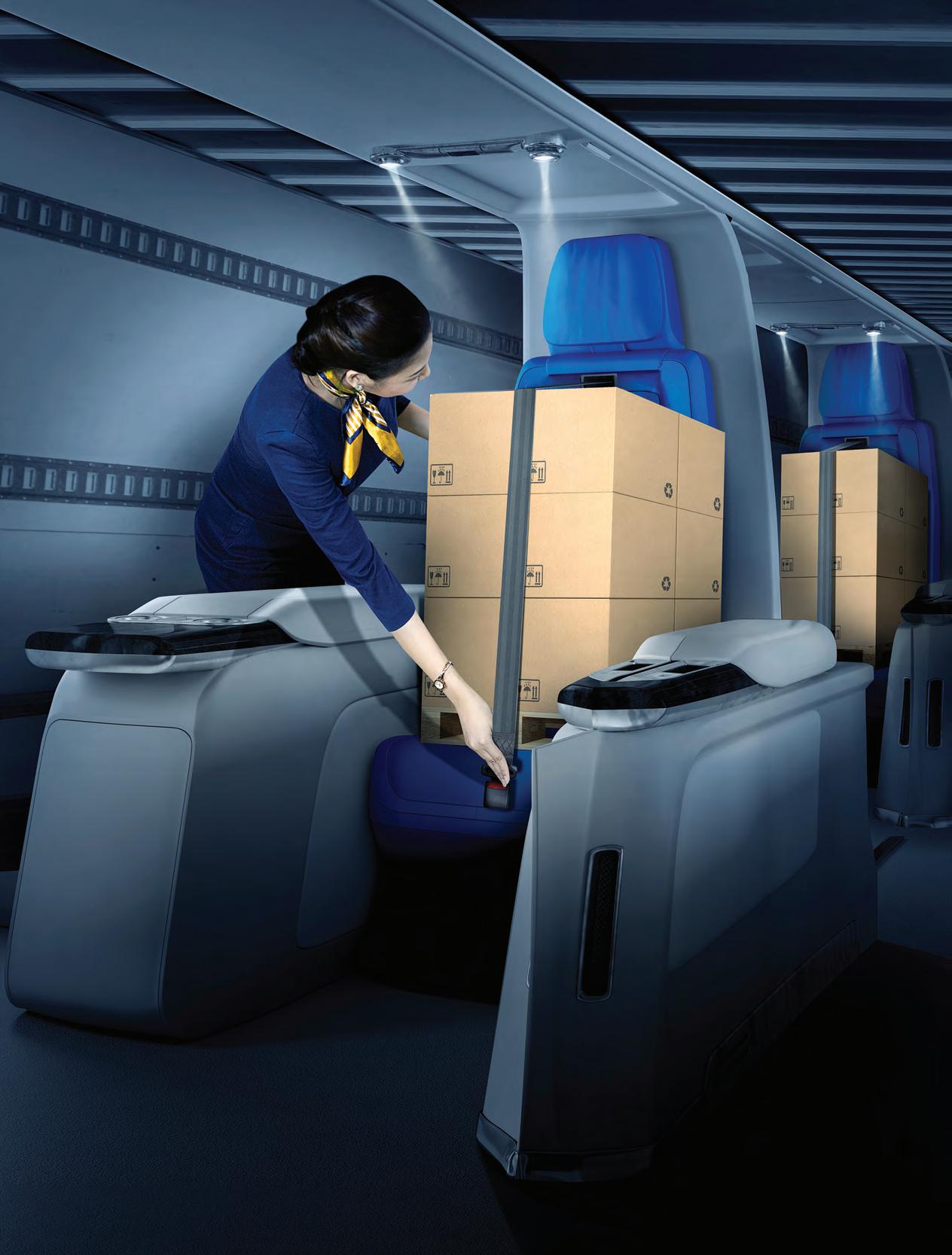
• Piloted by experts ensuring minimal turbulence in transit
0.19% CLAIMS RATIO
#CrossBorderPros
1.800.409.2269
• Total security compliance as a CAN & USA customs bonded carrier
• Express border clearance via intelligent customs document processing
• Real-time tracking, automated updates & instant notifications
• Luxury customer experience with online ordering, shipping tools & 24/7 support
0% OOS RATE
YOUR TICKET TO
FIRST CLASS
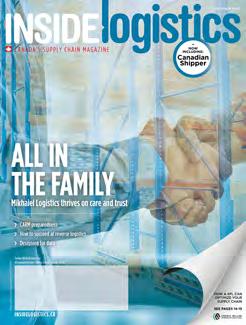




insidelogistics.ca 3 In every issue: 5 Taking Stock The long game 6 Supply Chain Scan News and numbers from around the world 11 Movers + Shakers Appointments and promotions 26 Guest Editorial Getting aboard with emissions reporting 29 Trade Update Conflict and trade 30 Safety First Preventing struck-by injuries CONTENT S 16 Reverse logistics What you need to know to manage returns with less waste 18 Warehouse data Capture and use the right data to gain profit-building insights 24 CARM is coming! What you need to know to be ready for the final countdown to CARM 6 cover image: Suriyo & sarymsakov.com/ AdobeStock ON THE COVER | PAGE 20 SUPP LY CHAIN SCAN Pet Valu’s new DC | Canada Post opens sorting centre | Spot and Stretch get new jobs | AI in the yard | CIFFA’s 2024 conference OCTOBER 20 23 • VOLUME 68 • NUMBER 5 CANAD A ’S SUPP L Y CHAIN MAGAZIN E NOW INCORPORATING CANADIAN SHIPPER 16 24 18 A family affair One 3PL’s story of success 20

PALLET RACKING DRIVE-IN PUSHBACK MEZZANINES PALLET FLOW CANTILEVER CARTON FLOW SHELVING Listen Plan Design Integrate 3D STORAGE SOLUTION S L IMIT E D 1 (877) 557-2257 3DSTORAGESOLUTIONS.COM
Publisher | Delon Rashid (416) 459-0063 delon@turnkey.media
Editor | Emily Atkins (416) 262-4106 emily@turnkey.media


Contributing Writers | Norm Kramer, Christian Sivière, Maria Torrent-March, John O’Kelly, Glenn Palanacki, Ben Smeland
Creative Director | Samantha Jackson
Video / Audio Engineer | Ashley Mikalauskas, Nicholas Paddison
Sales | Delon Rashid, (416) 459-0063 delon@turnkey.media
Peter Bulmer, (585) 653-6768 peter@turnkey.media
Production and Ad-ops | Tracy Stone tracy@turnkey.media
Inside Logistics magazine is published by Turnkey Media Solutions Inc. All rights reserved. Printed in Canada. The contents of this publication may not be reproduced or transmitted in any form, either in part or full, including photocopying and recording, without the written consent of the copyright owner. Nor may any part of this publication be stored in a retrieval system of any nature without prior consent.
Canada Post Canadian Publications Mail Sales Product Agreement No. 43734062


“Return Postage Guaranteed” Send change of address notices, undeliverable copies and subscription orders to: Circulation Dept., Inside Logistics magazine, 48 Lumsden Crescent, Whitby, ON, L1R 1G5
Inside Logistics magazine (ISSN No.: 0025-5343 (Print); 1929-6460 (Digital) is published six times per year by Turnkey Media Solutions Inc., 48 Lumsden Crescent, Whitby, ON, L1R 1G5 From time to time we make our subscription list available to select companies and organizations whose product or service may interest you. If you do not wish your contact information to be made available, please contact us.
Playing the long game
IN OUR FEATURE STORY this month we chatted with third-party logistics provider Mikhaiel Logistics and their customers.
What really shone through in all the conversations we had with them is the foundational importance of relationships. Mikhaiel is not a large company, nor has it been around for a long time. But the interactions that its people have with customers are clearly its number one priority.
A lot of this comes down to the leadership shown by the three principals of the company. Their knowledge, expertise and understanding of what a 3PL customer really needs are what is attracting and retaining customers. In fact, their first customer came to them looking for their personal touch on transportation and logistics operations just they were starting up the company. That’s a vote of confidence!
And the care doesn’t extend only to the client base. Employees are part of the family. They are treated with respect and given individual consideration.
These are textbook examples of how to generate good feelings. But do these behaviours also generate profits? Well, yes, and it’s sometimes a long game that involves taking one for the team.
As the president of Mikhaiel Logistics said: sometimes his company has to make sacrifices to ensure their customers’ success.
And he’s not alone in suggesting this as a means to achieve loyalty, and profits. Aaron Bare, founder of business-to-business AI provider Kin + Carta, told Fast Company, “Often customer loyalty is created when something goes wrong. It’s how you act in difficult times that create bonds between customers and companies. Once a customer lands on their feet they will remember who was there for them during the difficult times.”
Ultimately, this isn’t a big secret. It’s really just a good understanding of how business works to understand that when your customer succeeds, you succeed. Anything you can do as a supplier to help that success will eventually reflect back in your own achievements.
What’s interesting is to see this philosophy put into action, and how it delivers tangible results for all involved. To see about how Mikhaiel Logistics puts its customers first, you can read the whole story starting on page 20.

President & Managing Partner | Delon Rashid
Head of Sales & Managing Partner | Peter Bulmer
Corporate Office 48 Lumsden Crescent, Whitby, ON, L1R 1G5
ISSN 0025-5343 Online 1929-6460
insidelogistics.ca 5
TAKING STOCK
MIKHAIEL LOGISTICS PUTS CUSTOMERS FIRST – PAGE 20.
New DC will be pet food first for Canada
By Emily Atkins
PET VALU HOLDINGS LTD. has opened a new 670,000-square-foot distribution centre in Brampton, Ontario.
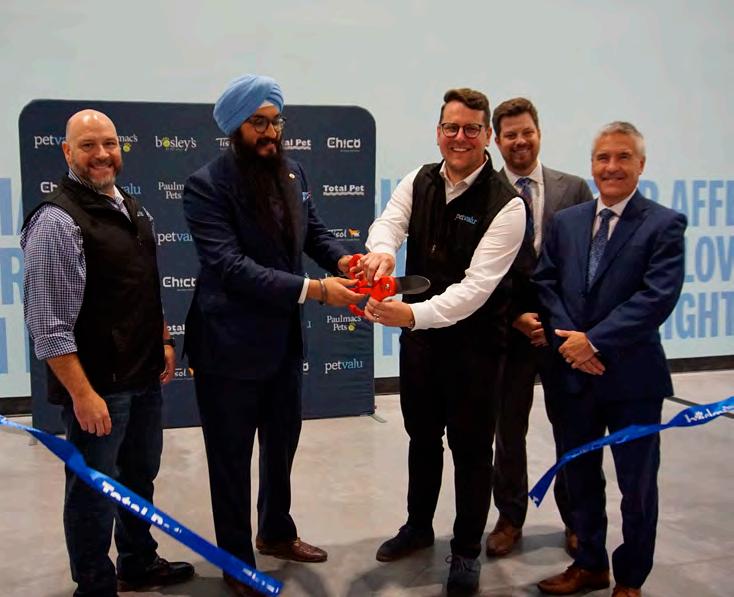
The new DC is part of the pet supplies retailer’s nationwide supply chain transformation. It is the largest distribution centre and robotics automation installation in Canada serving the pet specialty industry.
The company plans to invest $110 million over four years to modernize its distribution networks in the Greater Toronto Area, Vancouver and Calgary. Progress has also begun in Vancouver, where Pet Valu has signed a lease for a new, near-complete facility, targeting start-up in mid-2024.
Built by Orlando Corporation, Canada’s largest privately owned industrial real estate developer and landlord, the GTA DC is approximately the size of 11 football fields and will bring
500 jobs to Brampton.
“Our GTA DC establishes a new benchmark for pet specialty distribution capabilities in Canada. In addition to providing a modern supply chain network that can supply our stores with flexible, reliable and accurate service, and world-class on-shelf availability in store and online, the facility supports the individual needs of our diverse workforce.
Highlights include a café, nursing room, prayer rooms, training room, driver’s
6 INSIDE Logistics OCTOBER 20 23
up to
AI FOR YARDS Autonomous vehicles and AI deployed for yards 9 MOVERS +
Appointments and promotions 11 ROBOT DEPLOYMENT Spot and Stretch get new job 12 SUPPLY CHAIN SCAN |
SHAKERS
From left to right: Richard Maltsbarger, president and chief executive officer at Pet Valu; Brampton city councillor Gurpartap Singh Toor; Nico Weidel, Chief Supply Chain Officer at Pet Valu; David Mckeown, project manager, Orlando Corporation; and David Wawrychuk, senior vice president engineering, Orlando Corporation.
– Nico Weidel chief supply chain officer at Pet Valu.
lounge and open concept office space. The facility also employs advanced health and safety features, such as ergonomically designed workstations and equipment.
Starting in the first half of 2024, Pet Valu plans to introduce automation into the GTA DC, with the installation of Canada’s largest goods-to-person robotics installation dedicated to pet specialty products. The design will have the capability to process orders same day, while improving pick productivity by more than 50 percent and reducing the overall footprint compared to a traditional manual picking solution.
The facility’s processes, systems and automation are expected to reduce costs per case and drive productivity improvements as well as provide improved product availability, faster order processing, and overall customer service levels for stores and e-commerce customers.
“Our GTA DC establishes a new benchmark for pet specialty distribution capabilities in Canada. In addition to providing a modern supply chain network that can supply our stores with flexible, reliable and accurate service, and worldclass on-shelf availability in store and online, the facility supports the individual needs of our diverse workforce,” said Nico Weidel chief supply chain officer at Pet Valu.
Pet Valu expects the GTA DC to be fully operational by the first half of 2024, following a phased transition period. The facility is currently commencing receipt and shipment of bulk items such as dry pet food and litter.
Once installation and setup of automation equipment is complete in early 2024, receipt and shipment of piece-pick items such as toys and collars will transition over to the new DC.
The company will scale down use of its legacy distribution facilities and thirdparty storage space in the GTA throughout these phases. The new DC is just one element of Pet Valu’s nationwide supply chain transformation strategy.
Pet Valu has over 750 corporate-owned or franchised locations across the country.
Canada Post opens fast new sorting centre
CANADA POST HAS opened the Albert Jackson Processing Centre, its new Greater Toronto Area (GTA) parcel sorting facility.
This facility is Canada Post’s largest, fastest and greenest parcel sorting facility. It has doubled the company’s processing capacity in the GTA, where most of Canada’s parcels originate. With e-commerce expected to double in Canada over the next decade, this facility will help Canada Post meet demand.
“The Albert Jackson Processing Centre is much more than a building – it is a generational investment in the future of our country,” said Doug Ettinger, president and CEO of Canada Post.
“This facility will drive our network nationwide and help support the Canadian economy for decades to come.”
The new $470-million, zero-carbon facility, located at 1395 Tapscott Road in Scarborough, can process one million packages a day at full capacity. That's 60,000 packages an hour, 50 percent more than Canada Post's Mississauga Gateway facility. A package can arrive, be processed and be ready for dispatch in less than four minutes.
The building is 585,000 square feet – roughly the size of six CFL football fields – and contains nearly eight kilometres of conveyors. It employs 900 people and sorts to more than 300 Canada Post facilities.
continued on page 8

Bringing Discipline, Structure and Visibility to the Supply Chain

AUTOMATION ASSOCIATES INC. 6705 Tomken Road, Suite 211, Mississauga, Ontario L5T 2J6 905-565-6560
www.rfpathways.com RF_P_third square.indd 1 2022-07-04 3:33 PM insidelogistics.ca 7 continued from page 6 | SUPPLY CHAIN SCAN
PROUD TO BE THE SHIPPER’S CHOICE FOR LTL
For over 25 years, GX Transport has been supporting our clients with seamless LTL, truckload and dedicated services across Canada and the USA. Based on their positive feedback, we have received the Shipper’s Choice Award for delivering an exceptional quality of service that surpasses industry standards.
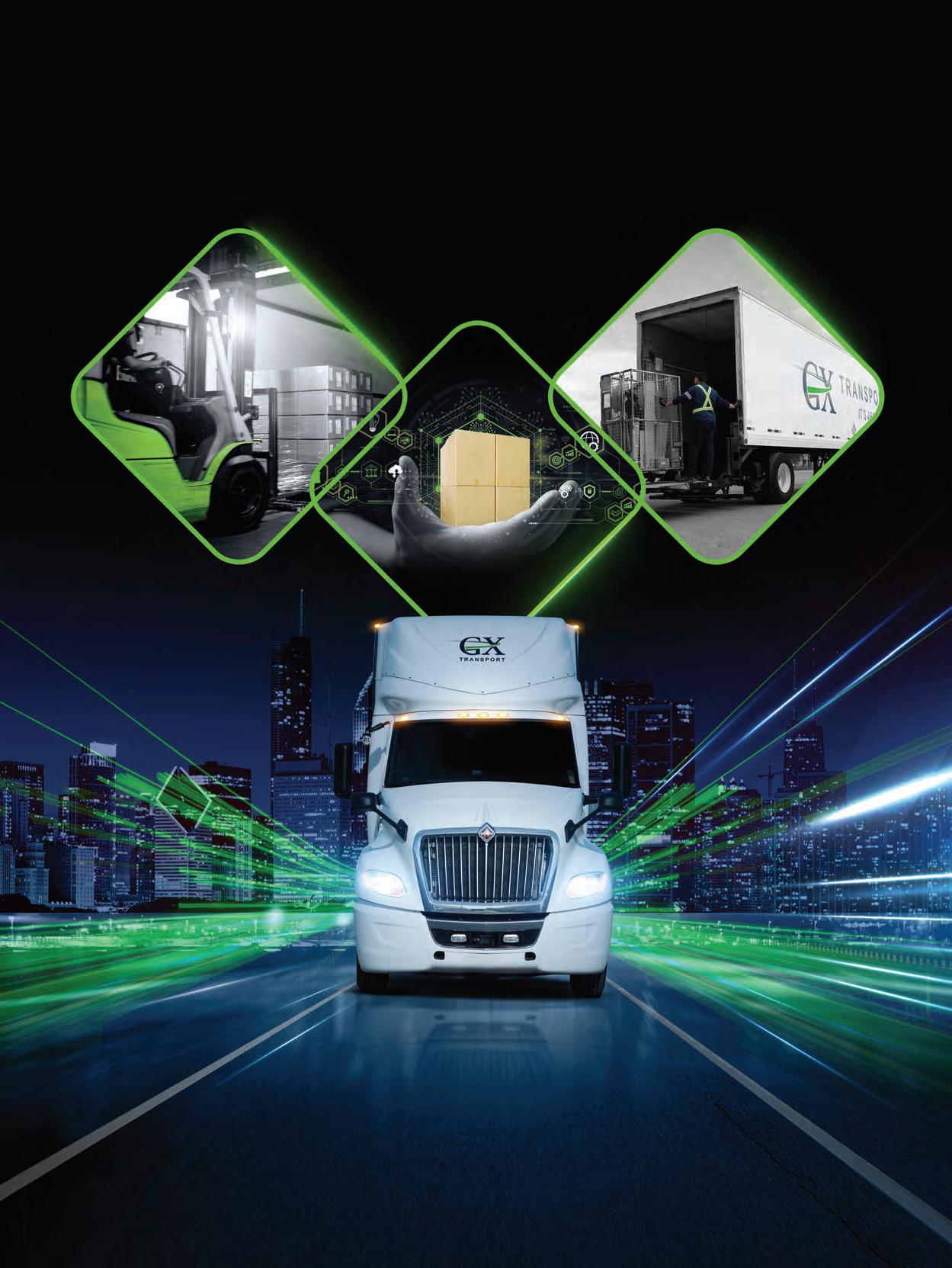
THANK YOU FOR ONCE AGAIN RECOGNIZING THE GX TEAM
The facility has more than 150 dock doors and its yard can hold more than 200 trailers, with another 100 spots for five-ton trucks. It is Canada Post’s first zero-carbon building and the largest industrial project in Canada with the Zero Carbon Building Standard designation. Rooftop solar panels generate clean, renewable energy onsite.
Moving what Matters
Albert Jackson was the first Black letter carrier in Canada. He had to fight to overcome significant racial barriers in the workplace, including the right to work in the position he was hired for.
Canada Post was honoured to have several members of the Jackson family, including one who currently works for the company, attend the grand opening ceremony.

For over 100 years, Oceanex has been providing efficient and reliable intermodal transportation services safely and with environmental leadership. With our fleet of 3 vessels and the largest dedicated fleet of containers and trailers servicing the province of Newfoundland and Labrador, we keep retail shelves stocked and deliver the materials that build and support our communities, keeping the economic engines of the province running.






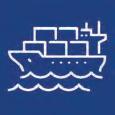

To and From Anywhere.
can help you move what matters.




insidelogistics.ca 9 continued from page 7 | SUPPLY CHAIN SCAN
Full Load A custom fleet to meet any requirement Automotive Purpose built vessels LTL No load is too small for Oceanex International Cargo
Cargo Experienced professionals, dedicated technology Oceanex Global Logistics
Project
Oceanex
www.oceanex.com
Doug Ettinger addresses the crowd at the opening ceremony.
Yards are going autonomous
BRINGING YARDS UP to speed with warehouse and transport digitization is driving the adoption of established supply chain technologies to help track, allocate, and optimize assets in the yard.
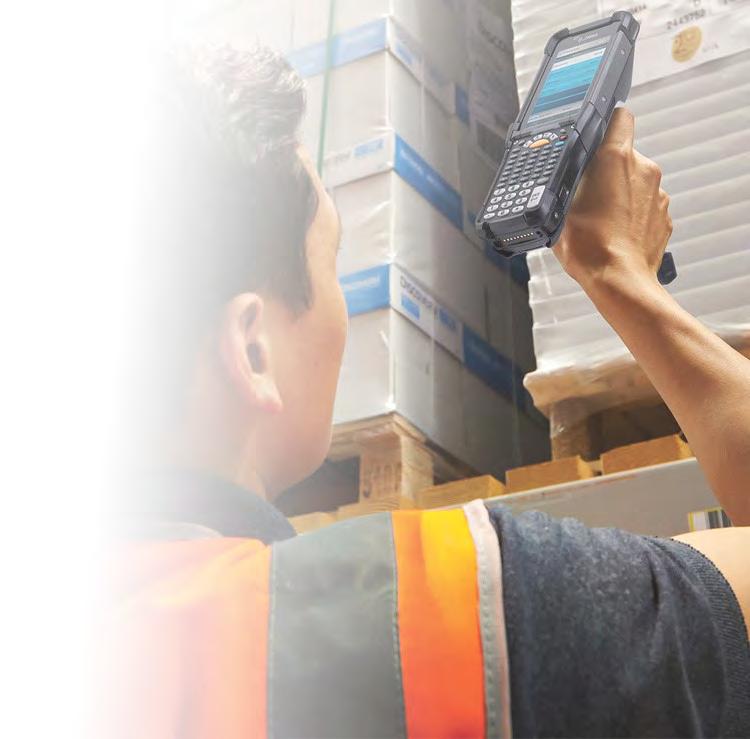
According to global technology intelligence firm ABI Research, the installed base of artificial intelligence (AI) enabled cameras in the yard will reach 11.2 million globally by 2030, and the uptake of autonomous yard trucks will rise significantly at a global CAGR of 52.7 percent from 2022 to 2030.
“Yards surrounding warehouses, distribution centres, and manufacturing facilities are becoming the new stomping ground for established supply chain solution providers as they diversify into yard management systems (YMS) and join a growing number of emerging companies focusing on automating yard trailer movements and live asset tracking. In a bid to digitize and update yard operations, installments of yard systems, enabling tracking technologies, and autonomous tractors are expected to rise considerably in the short to medium term,” explained Ryan Wiggin, industry analyst at ABI Research.
Blue Yonder, Körber, and FourKites are adding YMS to their extensive software portfolio, joining more focused yard solution vendors such as Kaleris and C3 Solutions. To enable tracking and visibility of assets and
CIFFA sets date for 2024 conference
CIFFA, the Canadian International Freight Forwarders Association, is celebrating its 75th Anniversary Conference and Trade Show
workers in the yard, handheld devices and AI-enabled yard cameras will see increasing deployments in yards globally, growing at a CAGR of 13.0 percent and 14.8 percent, respectively, from 2022 to 2030.
Established providers Advantech, Honeywell, and Zebra will lead the rise in handheld devices, while Blue Yonder, Peripass, and Robovision are pioneering AI-enabled yard camera systems.
Autonomous and teleoperated yard trucks remain nascent, but recent investment rounds, partnerships, and successful proof-of-concept (POC) projects indicate an interest and use case for the technology. Outrider, Phantom Auto, EasyMile, and Fernride are some of the few companies doubling down on yard automation, with small-scale deployments paving the way for wider commercial uptake in the coming years.
“Advancements in AI are breaking down many of the limitations faced by technologies in outdoor environments. Advanced computing power helps to process data from camera feeds, identify trailers and equipment, and guide autonomous vehicles safely. Where certain technologies couldn’t operate before, AI has helped unlock new use cases and will continue to drive solution adoption within yards,” Wiggins concluded.
These findings are from ABI Research’s Yard Digitalization Market Data report.
“Leading The Path Forward”, April 23 and 24, 2024, at the Westin Toronto Airport Hotel.
The opening session will feature the latest economic updates, and an evening keynote presentation from Janet Lapp. Lapp is a former professor, researcher, clinician, and registered nurse, who was born and raised in Québec. She has a PhD from McGill University in Montreal.
A licensed clinical psychologist and author
Cloud-basedWarehouseManagementSystem
• FIFO/LIFOAlloca�on,Picking,andPacking
• Mul�carriershipping(CanadaPost,FedEx,UPS,more…)
• CrossDocking
• Compliance labelprin�ng(Walmart,Macy’s,Amazon,etc.)

• Zebracer�fiedAndroidhandheldapplica�on

• Andmore…
Contactus: +1(833)749-9473|sales@pro4so�.com|www.p4warehouse.com
of five books, Lapp is the creator and host of the CBS series ‘Keep Well,’ and has appeared regularly on TV.
The conference day and a half lineup of speakers and panelists represents all modes of transport, legal, technology, sustainability, and customs experts.
Conference pricing is set at $175.00 for members and $575 for non-members.
10 INSIDE Logistics OCTOBER 20 23
CompanybasedinToronto
SUPPLY CHAIN SCAN |
movers + shakers



The Trois-Rivières Port Authority (TRPA) appointed France Cinq Mars as a new director and elected Véronique Néron as chair of the board and Félix Hamel as vice-chair.

Danielle St-Amand left the board after nine years of service, including six as president.
Néron specializes in business law, with a specific focus on the purchase/sale of businesses and tax and corporate reorganizations. She also sits on the boards of the Institut secondaire Kerenna, the MultiBoulot organization and Noël du Pauvre. She has also served on the board of directors of the Fondation Santé Trois-Rivières, and was until recently a member of their governance committee.
Hamel holds a double bachelor’s degree in Entrepreneurship & Innovative Management and Finance from the Université du Québec à Trois-Rivières. In 2011, he took over the reins of Thrace valeurs immobilières, a company offering property management and real estate development services. Hamel is involved in various community organizations, including the CaisseDesjardins de Trois-Rivières and the Société de développement commercial du centre-ville de Trois-Rivières.
Cinq-Mars recently retired from the City of Trois-Rivières, where she worked as a manager for 34 years. With a degree in accounting and a CPA, CGA designation, she held a number of important management positions, including Director of Finance, Assistant General Manager, Administrative Services, and finally General Manager for the last six years of her career.
Minister of transport Pablo Rodriguez announced new appointments and re-appointments in the transportation sector. Elizabeth Catherine Barker of Ottawa was reappointed as vice-chairperson of the Canadian Transportation Agency for a five-year term. Chief Marilyn May Slett of the Heiltsuk Nation in Bella Bella, British Columbia, was appointed as a member of the Pacific Pilotage Authority for a four-year term. Denis Déraps of Natashquan, Quebec, was reappointed as the Wharfinger of Natashquan for a three-year term.
Sébastien Martel is joining the board of directors of TFI International Inc. Martel was previously the chief financial officer of BRP Inc. He was with BRP for nearly 20 years, serving as CFO since 2014. A registered CPA, Martel holds a bachelor degree in accountancy from McGill University.

The Montreal Port Authority (MPA) has appointed Geneviève Deschamps as interim president and CEO, as of August 21, 2023. Deschamps had been vice-president, finance since August 2021. She has 25 years’ experience in the infrastructure sector, managing multidisciplinary teams in the energy and finance sectors. Deschamps will lead the port while the board of directors seeks a replacement for Martin Imbleau who announced he was leaving the top job at the port earlier in August.
The St. Lawrence Seaway Management Corporation (SLSMC) has appointed two new members to its board of directors. At the SLSMC’s 2023 Annual General Meeting (AGM), Tony Valeri, managing director of Ridge Strategy Group Inc., was elected to the board by the Steel and Iron Ore group, replacing Bronko Jazvac. In 2011, Valeri joined the steel-making organization ArcelorMittal-Dofasco, where until recently he was vice-president, corporate affairs. As well, from 1993 to 2006, Valeri was a member of parliament where, during his tenure, he served as minister of transport. Julie Lambert, president of Petro-Nav (Groupe Desgagnés), was also elected to the SLSMC Board of Directors by the Other Members industry group, succeeding Raymond Johnston. Lambert joined Petro-Nav in 2021 and previously worked for Canada Steamship Lines as vice-president commercial. Lambert has a legal and business background.
Need a fresh take on fullfillment automation? Discover if a regular or double-double is the right blend of conveyor and automation for your business at TREWautomation.com. Nov 07-09 Toronto Congress Centre Toronto, Ontario Trew Booth #1330 Hope to See You There insidelogistics.ca 11
| SUPPLY CHAIN SCAN
Spot and Stretch robots land big gig
THE OTTO GROUP is planning to use Boston Dynamics's Spot robots in more than 10 facilities and Stretch robots in more than 20 over the next two years.
The Otto Group is a global retail and services group with around 41,000 employees in 30 major company groups. Most of its operations are in the economic regions of Germany, the rest of Europe, and the USA.
The first deployment will be with Hermes Fulfilment. The deployment supports Otto Group’s efforts to improve safety, increase operational efficiency and address labour shortages for specific types of warehouse work. The agreement
marks the first time both of Boston Dynamics’ commercially available robots will be deployed together at enterprise scale.
Under the terms of the agreement, Spot, the four-legged mobile robot from Boston Dynamics, will support tunnel inspections and predictive maintenance activities for operations equipment, including thermal monitoring, analog gauge reading and acoustic detection of pressurized air and gas leaks. The Spot fleet will also run autonomous missions, collecting data for machine learning models to support tasks like fire exit egress monitoring and detecting slight changes in storage racks to keep Otto Group’s warehouses even safer.
YOUR INTRALOGISTICS OPTIMIZATION PARTNER
When you need to move, manage, store and protect™ goods, make Johnston Equipment your first call. Organizations across Canada count on our deep industry expertise and Complete Solutions™ portfolio to deliver efficiencies and innovation across their material handling business.
RUN BETTER. MANAGE SMARTER.™
Discover how Johnston Equipment can help optimize your facility.
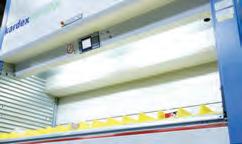
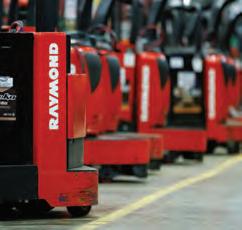
Stretch, Boston Dynamics’ box-moving robot designed for warehouse applications, will begin unloading containers at 10 facilities next year, with the goal of having all sites operational by the end of 2025. Stretch, which is particularly useful for unloading heavy packages in the container sector, will provide technological support for physically demanding activities.
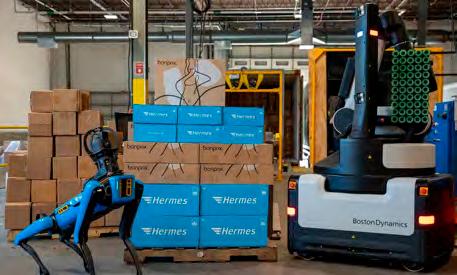
The Otto Group offers a comprehensive training program to equip staff with the skills to work with robotics and AI. More than 10,000 warehouse and facility workers have participated in the company’s TechUcation virtual training courses so far.

“We have learned to adapt quickly and flexibly to new market situations, which makes us strong for the future,” said Kay Schiebur, member of the executive board, services, at the Otto Group.
The Otto Group and Boston Dynamics also plan to collaborate on research and development, including additional future use cases for both Spot and Stretch robots over the next several years.
“As one of Europe’s most innovative and forward-thinking companies, the Otto Group is an excellent fit for our technology,” said Robert Playter, CEO of Boston Dynamics.
“This agreement represents a strategic collaboration that will benefit both our companies for years to come, and we look forward to seeing the value our mobile robots can provide when combined with Otto Group’s deep expertise in logistics and fulfillment.”
12 INSIDE Logistics OCTOBER 20 23
©2023 Johnston Equipment johnstonequipment.com
1.800.668.5586
130887_JE_Print Ad_4.5x7.5_Insider Logistics_FA.indd 1 2023-06-20 8:57 PM SUPPLY CHAIN SCAN |
Hangcha Forklift opening Mississauga warehouse
HANGCHA FORKLIFT CANADA is opening a warehouse in Mississauga, Ontario, in October.
The 30,000-square-foot facility joins existing warehouses in Vaudreuil-Dorion, Quebec, and Vancouver, allowing the company to maintain an inventory of 550 units at any given time. The Vaudreuil-Dorion facility, in the Montreal area, is 26,500 square feet.
Hangcha Canada offers a range of material handling solutions to meet the needs of the Canadian market. It offers electric counterbalance lifts, narrow aisle trucks, pallet jacks, tow tractors, and a rough terrain forklift among others. It has a full line of lithium-ion battery powered vehicles.
“Selling Hangcha Canada material handling equipment allows our staff to offer the Ontario market a full line of high-quality and well-priced electric and internal combustion forklifts and reach trucks,” said Chris DiBerto, sales manager at Ri-Go Lift Truck Ltd.
“Hangcha Canada offers a broader product range than most Original Equipment Manufacturers (‘OEM’) with stock at three distribution centres in Canada, making it easier than ever for our team to demo and receive quick delivery on equipment.”
According to Randy Thistel, Hangcha Canada's Ontario sales representative, the new Mississauga warehouse is increasing the company's ability to support and grow Hangcha Canada’s footprint in Ontario.

“Hangcha Canada’s expansion plan signifies our dedication to Canada's material handling industry. In January 2024, we will be expanding our headquarters in Quebec to include a stateof-the-art, on-site training centre and a parts department, allowing us to keep up with Canada’s ever-growing demand for our electric [lithium-
ion] product line,” said Robert Pitzul, vice-president of sales at Hangcha Canada.
Hangcha Forklift Canada Inc is headquartered in Vaudreuil-Dorion, QC, and was incorporated in 2019. It is a wholly owned subsidiary of Hangcha Group, a full-line forklift developer, manufacturer, and supplier.
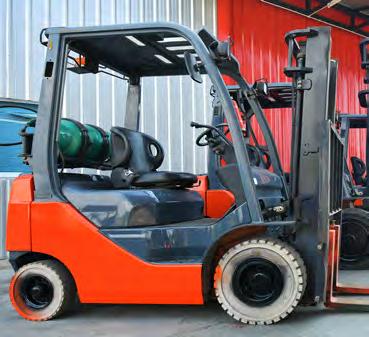
The parent company has been around since 1956. Its first forklift rolled off the line in 1974. In 2012 the company branched out into AGV manufacturing.
Become a Logistics Insider

Enjoy
CITT is Canada’s Logistics Association and the home of Canada’s Logistics Community. If you’re involved in the business of logistics in Canada, you officially join your national community of practice today!
As an affiliate of CITT:
Be well-connected. Join Canada’s most interactive logistics community for networking events, online idea-sharing, exclusive job opportunities and more.


Be informed. Access industry reports, free webinars, and priority registration to professional development opportunities.

Be recognized. You’ll get a fully verified digital credential identifying you as part of Canada’s most respected logistics organization.
Learn
insidelogistics.ca 13
the benefits of affiliate membership with Canada’s Logistics Association
more & join today at citt.ca/community
| SUPPLY CHAIN SCAN Image: user8818949/freepik.com
HOW A 4PL CAN HELP OPTIMIZE
YOUR SUPPLY CHAIN
Where does it hurt?
There’s always room for improvement in supply chain operations, but knowing where to turn for help can be a challenge.
Cedric Millar, a supplier-agnostic, non-asset supply chain solution developer, or fourth-party logistics provider (4PL), is ready to help. The company consults with organizations that are experiencing pain in the supply chain and helps to figure out enduring, cost-saving solutions.
Cedric Millar’s president, Brian Ware, sat down with us to share their methodology.
When clients talk with Cedric Millar about pain points, he says, they seem to fit in seven major buckets. These are:
Outdated technology within the organization, and as a subset of that, lack of necessary integration to the sources of technology they have;
Lack of visibility of their overall supply chain, their financials and/ or operational performance. Many companies struggle with following the life of the PO from order to cash.

Manual or inefficient processes, whether operational, administrative, financial, and/or technological;
Lack of understanding the triggers for rising costs, from raw materials and labour, to fuel and logistics, and more;
Service failures or the inability to properly service their customers throughout their supply chain;
Damages or non-compliance penalties and fines;

Global supply chain instability.
When Cedric Millar starts working with a new company, the first goal is discovery. “We actively listen to our customers. We spend a lot of time learning about their business and how data flows within the organization, and what the underlying business processes are, so that we have a really strong comprehension of their business, and the gaps between the types of information they need and the types of information they have. That’s when we start to spend time trying to build a bridge between the two,” Ware says.
Cedric Millar has a strong focus on business intelligence, with both analytics (Beacon Analytics) and software offerings (Lighthouse TMS) that it can deploy to alleviate the pain. Many of the challenges a company faces ultimately link back to data and communication, Ware notes. In fact, good analysis of existing data streams can help in many ways: demand planning and forecasting, inventory management, process improvement, network optimization and supplier engagement, and relationship management. Turning data into actionable information is the foundation for continuous improvement.
Once the client’s pain points have been identified and quantified, and the analysis has been completed, the information gathered is presented to the client in a “current state” business profile for their approval. Once the alignment is there on both sides, then Cedric Millar works to develop and present a “future state” solution with the aim of addressing all of the pain points and providing a strategic platform going forward.
A nd here’s where Cedric Millar is different from a traditional consultancy. “We go in and we’ll learn about those pain points and if we can then work with the companies to address them, we will. If we do not see an opportunity to provide ongoing value with the
14 INSIDE Logistics OCTOBER 20 23
Cedric Millar addresses the pain points
Cedric Millar Facts and Figures (YTD 2023)
50+
35+ Team Members – Lean Certified (Green, Yellow and/or Whitebelt)
10+ North American Request For Proposals (RFP’s) Executed
>63 Continuous Improvement Projects In Progress/Completed (External & Internal)

organization at the end of the solution development process, then we’ll very openly share our findings and shake hands and move on,” Ware says.
He points out that the company has been consistently growing without a formal sales team. He believes that Cedric Millar’s success is tied to having no preconceived notions of what a solution might be. Their solutions are not tied to a particular service or product – only to what will help the companies they serve.

Integration
Once the customer is committed to the solution, the Cedric Millar team begins an integration process, where they bring in all the data they need from the customer’s systems, clean it up, and introduce it into their systems.
Ware shares the example of one customer that was growing rapidly through acquisitions. Because there was limited centralized structure for reporting and data management, senior leaders were having trouble integrating the businesses and finding opportunities for optimization. Cedric Millar has been able to work with each of its individual business units to fill the gaps where certain information didn’t exist and bring that information and visibility to the leadership team so that they can get a clear picture of what their overall logistics and supply chain spend is, along with their overall network design.
“From there, we will work with them to implement necessary technology, whether it be off-the-shelf, or our Lighthouse transportation management system, our Freight, Audit, and Pay service, or even our Beacon Analytics tool, and then help them effect and execute change across their organization,” Ware says.
That will then give visibility into spend, and potentially allow for a complete reassessment of their carrier requirements, for example. “Maybe they’re using hundreds of carriers or suppliers, but they don’t necessarily need to be. We can get more strategic about the suppliers they’re using, give them visibility to where all their product is in real time so that they can address any potential concerns with their customers so that they can meet, if not exceed, their customer service requirements.”
Turning data into gold
There’s no alchemy to what Cedric Millar does, although their methods do frequently turn data into efficiencies and cost-savings. Ware says it’s quite common for the savings and benefits returned through supply chain improvements to return more to the client than the cost of Cedric Millar’s service.
He does allude to magic, however, noting that a good cultural fit between two organizations can make for superlative results. “We’ve seen this quite a bit where a solution that we’ve presented is compelling, and because our two organizations have this strong cultural fit, it becomes very innovative. We may have five or six ideas, but because we have someone on the other side of the table who is aligned with what we are trying to achieve, they come with two or three more ideas, and there’s a lot of magic we can make.”
Ware adds that it helps to have a customer that is open to new ideas, and new ways of doing things, but not making changes just for change’s sake. “We build all-star teams, we take what’s working within a company’s supply chain, and we work to find ways to improve it, and resolve what’s not working. We look for ways to solve the pain, so we’ll take the best of theirs, the best of ours and build an all-star team. I can’t emphasize enough that cultural fit, that partnership approach and the way that our two teams integrate – we are essentially an extension of that organization.”
Cultural fit
He adds that when that cultural fit is there, it facilitates change management and opens doors for continuous improvement, another of Cedric Millar’s central goals in optimizing supply chains. He’s seen it happen, where Cedric Millar is going live with new processes and technology for a customer and “all of a sudden they’re saying, ‘I want to talk to you about our ocean freight coming from overseas. Now that we have all this data, can we expand our analytics to include full cost of goods sold for our finance team? Can we work with our vendors to break out the transportation costs to find some savings there? Can we look at our fleet?’” The collaboration just builds on itself and companies find they are in a continual state of improving their operations. Ware says it’s the personal approach that makes the Cedric Millar process work for its customers. “We are people, and we are working with people and solving problems of people, and we are very focused on maintaining that personal and integrated approach. We are looking to build long-term enduring relationships. We are, first and foremost, focused on quality. We are not looking to be the biggest 4PL out there, but we absolutely are focused on being the best.”
BRIANWARE , PRESID E N T insidelogistics.ca 15
Team Members – US & Canada
>$18.2MM
>166,000
>227,000
in Savings Achieved
Shipments Managed
Invoices Audited
RUNNING IN REVERSE
The future of returns
MANAGING RETURNS HAS traditionally been treated as an afterthought, but with the rise in e-commerce sales, returns are sure to be substantial. If not handled properly, mistakes can lead to poor customer experience and revenue loss.
Many businesses are now placing a greater emphasis on managing returns, calling it “reverse logistics”. Many reverse logistics initiatives have come a long way in a short period of time. Here’s what those look like and what to expect from the future of reverse logistics.
What is reverse logistics?
If logistics describes how products move through the supply chain from manufacturer, to warehouses, to consumers, reverse logistics details how things move in the opposite direction. In other words, it deals with products going from the customer back to the supplier for various reasons:
1. Broken or damaged products
2. Mistakes made in order fulfillment
3. Customers changing their mind
4. Product recalls
5. Trade-in or recycling programs
The reverse logistics process works by authorizing a product return, assessing product condition upon receipt, reclaiming any product value (adding it back to inventory, reselling it at a discount, etc.), and approving any customer refunds.
Why reverse logistics should be a priority
With the rise of online sales, reverse logistics has become a necessity for businesses. In fact, the average e-commerce return rate ranges between
20 and 30 percent. According to Statista, returns of online merchandise in the U.S. alone amounted to nearly US$213 billion in 2022. That’s a decrease of about two percent from the prior year when e-commerce sales peaked at $218 billion. With an improved reverse logistics system, companies can spend less time handling returns, which reduces additional storage and distribution costs.
Netsuite suggests that an optimized reverse logistics system can also create greater supply chain visibility, leading to further benefits such as greater customer satisfaction, faster and better services, improved brand sentiment, waste reduction, and more.
It’s tough to discuss online sales without also addressing returns. E-commerce giants like Amazon have set the bar high by offering free, no-hassle returns to customers. This “Amazon Effect” means that many consumers are searching for similar experiences. In fact, over three-quarters of consumers will decline to do business with an online seller that doesn’t have a reasonable return policy.
In addition to delivering a positive customer experience, prioritizing reverse logistics just makes good business sense. When a company can efficiently repurpose returned goods, this can save what would otherwise be lost revenue. Also, a well-run reverse logistics process delivers valuable insights companies can use later to improve business.

Looking into the future of reverse logistics
According to Grandview Research, the reverse logistics market was worth about $840.7 billion in 2021. This figure is expected to expand by a compound annual growth rate (CAGR) of about 12.4 percent from 2022 to 2028.
Rising awareness of the benefits of reverse logistics will continue to fuel growth and innovation within companies. Many of the innovations that improve supply chain and warehouse efficiencies are also being
16 INSIDE Logistics OCTOBER 20 23
RETURNS | By John O’Kelly
Image by Drazen Zigic: freepik.com
applied to reverse logistics. Here are a few things expected to transform reverse logistics in the coming years.
1. Using RFID solutions
Without a robust reverse logistics plan in place, businesses would be unable to keep up with the volume of e-commerce returns. Fortunately, the same technology solutions that improve efficiency in the forward supply chain can also help maximize processes and efficiency in reverse logistics.

Radio frequency identification (RFID) tags can communicate comprehensive data, such as product descriptions, dates, necessary temperature, and more. Using RFID can simplify the reverse logistics process and save costs. It also provides a better customer experience as consumers want to track their purchases and returns conveniently and in real time.
2.
Leveraging blockchain technology
Blockchain technology has the potential to revolutionize reverse logistics. It’s a decentralized digital ledger that records transactions with high accuracy. It is a transparent and secure means of tracking the movement of returned products, better enabling businesses to manage returns and recycling or disposal processes.
Many businesses have yet to embrace blockchain, but that could change as the benefits of this technology become clearer. These include:
▶Improved traceability — Using blockchain, businesses can create digital record histories for each product and show their movement through the supply chain.
▶Increased efficiency — By using blockchain technology to automate certain parts of the reverse logistics process, companies can reduce the time and cost of managing returns.
▶Enhanced asset utilization — Blockchain technology can enable the reuse of returned products, which reduces waste and boosts asset utilization.
▶Better transparency Because blockchain technology creates a
decentralized, transparent transaction record, it makes it easier to track the movement of products as they move through the reverse logistics process.
3. Focusing on data-driven forecasting
Making the most of technologies like RFID and blockchain requires embracing digital technology solutions at various points in the supply chain. A warehouse management system can help a business automate its processes and inject more visibility throughout the supply chain.
Improved transparency allows businesses to adapt quickly to changes and optimize costs. If a large percentage of certain products are being returned due to defects or some other issue, this is something the business can address. Using an inventory management system to its full capabilities can save hours of labour and reduce inventory carrying costs.
4. Embracing sustainability
Today and in the future, more merchants will focus on sustainability to differentiate their businesses and be better environmental stewards. When choosing which products to buy, 80 percent of customers will weigh sustainability in their decision-making, and one-third are willing to pay more for sustainable products. Shoppers, particularly Gen Z and younger generations, are supporting these types of brands.
In addition to focusing on how products are made and fulfilled, your business should also look at sustainable reverse logistics. Analyze the return processes to see how it can be more environmentally friendly. Can you reuse packaging with returns? Instead of sending items to the landfill, can they be sold at a discount? If they are unusable, see if they can be recycled or repurposed.
Instead of simply focusing on getting products into customers’ hands, businesses must also figure out how to efficiently handle returns. As reverse logistics takes a more critical role within an organization, customers are more satisfied, and businesses can achieve better overall results.
insidelogistics.ca 17
John O’Kelly is founder and CEO of Newcastle Systems.
UNLOCKING YOUR DC’S DATA POTENTIAL
Proven best practices for effective data engineering and utilization
IN TODAY’S BUSINESS environment, data is considered one of the most valuable assets of any organization. It enables leaders to make informed decisions, measure performance, and identify trends that drive growth.
In warehousing and distribution, data plays a critical role in driving competitive advantage in efficiency, labour productivity and accuracy, among other areas. However, capturing and managing data can be a challenging task, especially when dealing with large amounts of information from multiple sources.
In fact, I would say the way it is collected, its “cleanliness,” and the way it’s presented and utilized, are some of the most critical hurdles we face in working with software implementations with customers. That’s where data engineering comes into play.
Data engineering is ”the process of designing and building systems that let people collect and analyze raw data from multiple sources and formats,” according to Dremio. It enables businesses to capture and manage data from multiple sources, as well as organize and structure it, to ensure that the information is accurate, consistent, and reliable.
In warehousing and distribution, good data engineering can help businesses improve efficiency, reduce errors, and increase visibility into operations. Here are some best practices for driving optimized
data engineering in the warehouse or distribution centre.
Define clear data requirements
It’s essential to have a clear understanding of the data requirements for your business. This means defining what data is needed, where it’s coming from, and how it will be used. This could include the existing warehouse management system (WMS), barcode scanners, RFID readers, ERP (enterprise resource planning) systems, and any other relevant sources.
Define the data format, frequency of updates, and the method of data transmission or synchronization. For SKU information it could include product descriptions, consistent unit weights, dimensions, storage locations, quantities on hand, and any other relevant attributes. Having a clear understanding of the data requirements enables businesses to capture and manage the right data, and ensures that the information is accurate and relevant to the business needs.
Use standard data formats
Standard formats are essential for the efficient use of data. Using standard formats such as XML, CSV, or JSON ensures that data can be easily integrated and shared across different systems and applications. It
18 INSIDE Logistics OCTOBER 20 23
DC OPERATIONS | By Ben Smeland
Photo by piickfreepik: freepik.com
also makes it easier to analyze and report on data, enabling businesses to identify trends and patterns that drive performance. Also, when gathering data, make sure it follows the same pattern and format across all your locations. In terms of locations, are identifiers for zone, aisle, slot level and bay the same in all your DCs?
Identify your key performance indicators (KPIs)
Definitively identifying your KPIs will ensure you are capturing the data that is most relevant to your business goals. For example, you might use order fulfillment rate, inventory turnover, and shipping accuracy as KPIs for your warehouse or distribution centre. In terms of productivity, you could identify:
▶ How efficient is each of my pickers in terms of productivity?
▶ How frequently did our order picking lag behind the schedule, leading to missed shipping deadlines?
▶ What are the velocities of our products and the current productivity of order picking?
Capture data in a timely way
Timely data capture is essential for businesses that require up-to-date information to manage operations effectively. This means capturing data as it’s generated, rather than waiting for batch processing or manual input. Timeliness in data capture enables businesses to respond quickly to changes in demand or supply chain disruptions and ensures that operations are always running smoothly.
For example, Lucas customer Apex Tool Group used timely data on order, inventory and task information from the WMS, including work status updates and exception notifications to respond to stock outs immediately, which drove better quality, workflow and completed orders.
Automate data capture and processing
Manual data capture and processing can be time-consuming and prone to errors. Automating data capture and processing using technologies such as barcode scanners, RFID, and warehouse automation software can help businesses streamline operations, reduce errors, and improve data accuracy. Automating data capture also frees up staff to focus on other tasks.
For example, one DC was manually batching orders based on ship times and picking three to four orders at a time. Implementing an automated solution in tandem with a voice-directed picking process, allowed them to gain the benefit of optimized batches, without sacrificing on-time delivery. They were able to reduce person-hours for picking dramatically while significantly increasing throughput per hour.
Implement data quality checks and a data governance framework
These best practices often go hand in hand. Data quality checks are essential for ensuring that data is accurate, consistent, and reliable. Implementing data quality checks at various stages of data capture and processing can help identify errors and inconsistencies before they impact operations.
Data quality checks can include validating data against predefined rules, checking for duplicates or missing data, and data cleansing to remove invalid or irrelevant data. On e-commerce fulfillment, for instance, regularly ensuring that customer information, including ship-
ping addresses and contact details, is consistent across all systems will minimize shipping errors and improve customer satisfaction.
Data governance is the process of managing the availability, usability, integrity, and security of data. Implementing a data governance framework enables businesses to ensure that it is managed effectively and consistently across the organization. This includes defining data ownership, data access policies, data quality standards, and data security protocols.
Implementing a data governance framework also helps businesses ensure compliance with regulatory requirements. For product information, setting responsibilities and a regular process to ensure product information – such as SKU numbers, descriptions, and dimensions – are regularly validated and updated will prevent errors during automated handling and order fulfillment.
In a pharmaceutical warehouse automation project, data governance ensures that patient-related information and drug tracking data comply with strict health regulations like HIPAA or GDPR. It includes access controls, encryption, and protocols for handling and anonymizing patient data.
Leverage data visualization tools
Data visualization tools such as management dashboards, charts, and graphs can help businesses make sense of large amounts of data and identify trends and patterns that drive performance. Data visualization tools enable businesses to create customized reports and dashboards that provide real-time insights into operations and enable leaders to make informed decisions quickly.
Several Lucas customers for instance, utilize real-time productivity dashboards and alerts as part of the workforce management module that allows managers to be more proactive in coaching and training and helps workers to stay on track with real-time feedback
Integrate data from multiple sources
Your warehouse or distribution centre likely generates data from multiple sources, including your ERP or WMS, inventory management system, order management system, and shipping and receiving systems. Conveyors or sorters with sensors, and devices like printers and mobile computers, can also be a great source of data, especially if it’s timely. Integrating data from these sources can provide a more comprehensive view of your operations and help you identify opportunities for improvement.
In conclusion, data engineering is a crucial process that can help improve the accuracy and efficiency of warehouse or distribution centre operations. By adopting the best practices outlined in this article, executives and leaders in the industry can ensure the data they capture is both relevant and reliable.
This, in turn, can help drive better decision-making, reduce costs, and enhance overall productivity. From ensuring data completeness and consistency to leveraging automation tools and integrating data from various sources, these strategies can help organizations stay ahead in an increasingly competitive market.
insidelogistics.ca 19
Ben Smeland is senior software engineer at Lucas Systems.
KEEPING IT IN THE FAMILY
Mikhaiel Logistics is expanding thanks to relationship building and a long-term vision

Atiny snapshot from the operations at 3PL Mikhaiel Logistics demonstrates the company’s commitment to its customers. When the warehouse manager had a longdelayed vacation coming up, he spent the four months ahead of time fully training his temporary replacement to do every part of his job.
The handover and vacation period went smoothly, according to Mikhaiel customer Ryan McGovern. He works for Princess Auto, a retail chain that specializes in farm, industrial, garage, hydraulics and surplus items, as its senior leader of transportation. They use Mikhaiel for truckload deliveries from their Milton, Ontario, DC to stores in Eastern Ontario, in Ottawa, Kanata and Kingston, to the tune of up to 14 loads a week. The 3PL also does vendor pickups on the backhaul.
In an environment that’s very much a buyer’s market, where he’s turning down a carrier a day looking for work, McGovern says it comes down to the partnership and relationship with the people at Mikhaiel.
“We’re very relationship-based as a company, and Mikhail is similar. We can pick up the phone,
20 INSIDE Logistics OCTOBER 20 23 THIRD PARTY LOGISTICS | By Emily Atkins
This photo is from left to right:
Audrey Livernois, Director of Sales Operations, Rolf C Hagen Inc; Rob Seymour, Vice President, Mikhaiel Logistics Inc; San Mikhaiel, President, Mikhaiel Logistics Inc; Thomas Marshall, CEO, Rolf C Hagen USA Inc; Sar Mikhaeil, CEO, Mikhaiel Logistics Inc; Mayor Pamela Goynes-Brown, City of North Las Vegas; Trevor Bowie, COO, Rolf C Hagen Inc; Alan Ragsdale, Economic Development Specialist, City of North Las Vegas; Terri Sheridan, Economic Development Manager, City of North Las Vegas.
we can have a conversation. It’s real, it’s not clinical,” he says.
Although the company is young, Mikhaiel’s roots go way back to the early days of Walmart’s entry to Canada in the 1990s. That’s where brothers San and Sar Mikhaiel met Rob Seymour and the three soaked up everything they needed to know to run a logistics company. In 2002 the Mikhaiel brothers and Seymour launched a transportation and logistics company called Islandwide. They sold the business in 2015.
But when the pandemic hit, opportunity knocked. The brothers called Seymour up and they started Mikhaiel Logistics in 2020, with one client, Rolf C. Hagen, the pet supplies manufacturer. Since then, they haven’t looked back, and have seen 40 percent growth year over year. San Mikhaiel and Seymour are the customer-facing guys, while Sar keeps things
running smoothly in the background, more focused on operations.
Princess Auto came on as a client in 2021, joining Hagen and the Hillman Group. Dollarama is a new customer, having joined in 2023.
The company currently operates from four facilities, Oakville and Belleville, Ontario, Calgary, and Las Vegas (see sidebar for details). The Vegas distribution centre just opened.
And there are plans for more. A new Belleville facility is slated to open in the fall of 2024 with 375,000 square feet, and another with 200,000 square feet in Balzac, Alberta, will start operations around the same time.
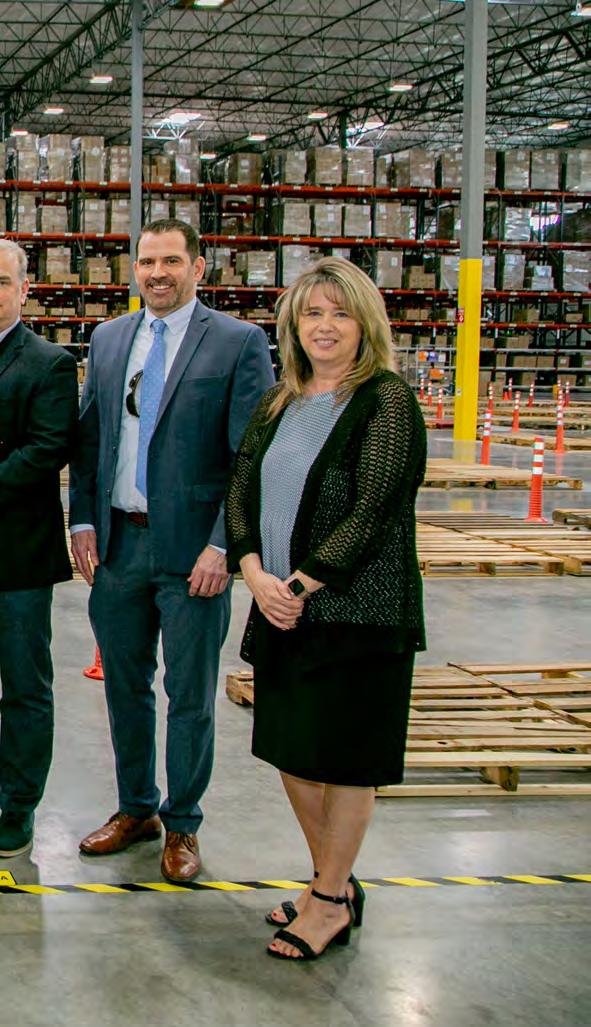
Rob Seymour, who carries the title of vice-president of transportation, characterizes the company as a family business. “We’re a family run company. We treat our employees with respect. We brought back a lot of our employees that we had from the past. And a lot of our drivers too,” he said.
Part of that success comes from borrowing from Walmart, San Mikhaiel, who is president, said. “The model they had was you move departments every three months so that you could do everyone’s job. We do the same thing here where we cross-train all the staff so that if there’s ever vacations or if there’s people who leave, or go to another company, we always have other people who can step into the role of any function inside of a facility.”
Avoiding corporate bureaucracy makes business more straightforward, he added. “We’re not typically corporate. We’re looking at bringing on more senior management, but we still like to get involved and, run the day-to-day. There’s no politics or anything like that. We make decisions quickly. There’s no ladder to climb.”
San echoes Seymour’s sentiments about family. “That’s pretty much our model. It’s like three brothers. We call ourselves three brothers –me and Rob and Sar. We know every staff member, and make sure they have a sense of purpose.”
So what the secret to the company’s rapid growth? According to San, what differentiates the 3PL is that they are trying “to find ways to save our clients money, and still turn over a reasonable profit. They see that we’re trying to work with them, it opens up their eyes to different ways of doing the business, and they haven’t seen that before,” he explains.
“No matter how big they are, their success obviously has to come first before ours, because if they’re failing, then obviously the business is going to go away, or it’s going to diminish or decrease. So we try to put our best foot forward in terms the quality of service, the quality of employees, and get all the employees to buy in that they’re not only working for us, that they’re a direct reflection of the clients that we represent.”
Trevor Bowie of Rolf C. Hagen agrees. Mikhaiel manages two warehouses in Canada and the one in Las Vegas for the pet supplies maker. They perform picking, packing and shipping as well as directto-store deliveries, and are responsible for 70 to 75 percent of Hagen’s Canadian transportation, Bowie said. The last part entails a lot of stops at small, urban mom-and-pop shops.
“They do an exceptional service for us. It’s a bit of a white glove service that they provide for us. It’s not the easiest thing to do, especially in some of the more dense urban areas. They deliver to small retails, parking’s an issue,” Bowie said. “And I’ve been with other companies doing the same things. And this has always been a problem for us. And they manage all of these things seamlessly and it really has been a good relationship.
Flexibility is another attribute that Mikhaiel’s customers emphasize. Bowie noted that as Hagen’s business has been growing, the 3PL has been extremely accommodating. “Flexible relationships permit us to
insidelogistics.ca 21
guarantee growth, limiting disruptions in the supply chain through them working with us on space allocation and warehouses,” he explained.

“So we can build a 200,000-square-foot DC or a 400,000-square-foot DC and commit to taking a certain portion of it with a guarantee for them over time, that that space will never be empty. It reduces our cost at the beginning of the term. And then they use that space for their own business. So they look for flexible arrangements as we grow, but also as they grow. And it gives us both the opportunity to be more efficient in our operations.”

Princess Auto’s McGovern has a similar story: “We were moving distribution centres in Milton [Ontario] last year, and we needed some extra equipment, and it was tight. I know that they were taking work away from themselves by providing us trailers just to shuttle back and forth between our buildings when we needed them. They freed up some yard space for us. These were all things that were not good business decisions for Mikhail, but a good partnership move for us.”
It comes down to building long-term relationships, San says. “We’ve helped out many clients like that, where we want them to succeed. For us, it’s a marathon. We want to be servicing these clients for like 20, 30, 40 years.
“They know they can come to us for anything and make any request, and we’ll follow through. And they’re always there for us as well.”

22 INSIDE Logistics OCTOBER 20 23
The brand new Las Vegas facility is dedicated to Rolf C. Hagen’s business
MIKHAIEL LOGISTICS VITAL STATISTICS
Facilities
Oakville, Ontario
▶ 50,000 square feet (Head Office and Cross-Dock)
▶ 14 DC and office employees
▶ 6 material handling equipment
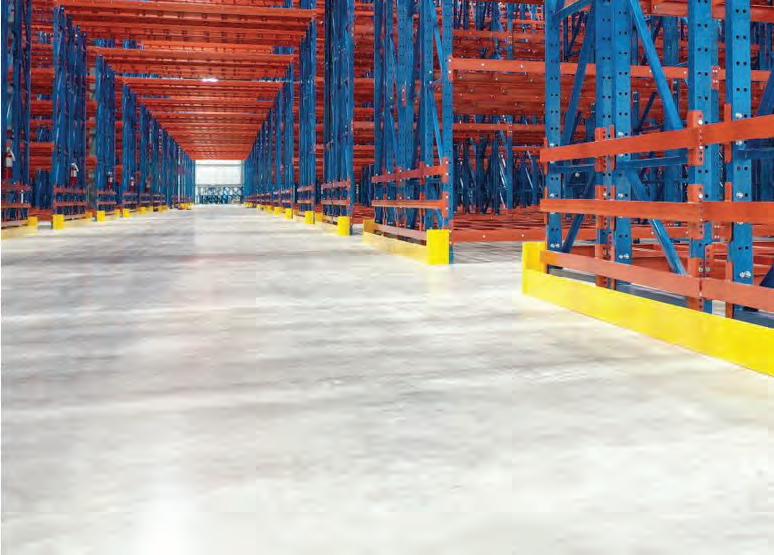
▶ 10 loads inbound and 17 loads outbound per day
▶ 3 to 7 loads per day pick up and delivered from customer
▶ Multi-customer facility
Calgary, Alberta
▶ 195,000 square feet
▶ 30 DC and office employees
▶ 24 material handling equipment
▶ 10 loads inbound and 11 loads outbound per day
▶ 2,900 lines picked and processed per day
▶ Multi-customer facility
Belleville, Ontario
▶ 195,000 square feet
▶ 34 DC and office employees
▶ 24 material handling equipment
▶ 8 loads inbound and 15 loads outbound per day
▶ 2,800 average lines picked and processed per day
▶ Multi-customer facility
Las Vegas, Nevada
▶ 200,000 square feet
▶ 30 DC and office employees
▶ 19 material handling equipment
▶ Average of 1,100 lines picked and processed per day
▶ Single-customer facility
insidelogistics.ca 23
CARM IS COMING
Will
you be ready on May 13, 2024?
BETTER KNOWN AS CARM, Canada Border Services Agency’s (CBSA) Assessment and Revenue Management project is a multi-year digital initiative that will modernize how the government interacts with the trade community to assess and collect duties and taxes – over $30B in annual revenue – for commercial goods imported into Canada.
Trade partners include importers, customs brokers, freight forwarders, carriers, customs bonded and sufferance warehouse operators, duty-free shop operators, financial security providers and software service providers.
Designed to replace legacy systems that date back to 1987, CBSA says CARM will deliver a globally leading customs experience that reduces the burden for legitimate trade, makes CBSA more efficient, and generates more revenue for the organization while contributing to securing Canada’s borders.

It’s a massive, generational shift for both industry and the government and it’s coming into force as the official system of record on May 13, 2024. Additionally, CARM is set to launch on that date as a big bang: legacy systems and processes come offline and the new technology and regulatory framework comes online. For hundreds of thousands of importers and their partners, preparedness now is crucial to keep goods flowing compliantly in the very near future.
Where are we today?
The CARM implementation is structured as a series of releases, the first of which, called Release 0, involved the Accounts Receivable Ledger (ARL) in January 2021. CARM Release 1 was launched in May 2021, introducing the self-service CARM Client Portal (CCP), allowing importers, brokers and third parties who submit rulings on behalf of importers to view transactions and statements of account, request rulings, and pay invoices with new electronic payment options. CBSA is now set to kick off the last
phase of the mandatory transition to CARM.
On October 16, 2023, the CARM Release 2 system will go live in a pre-production environment for select industry partners and software service providers who will be able to test their own internal systems and processes. Release 2 builds on lessons learned in the Deep Cycle Testing (DCT) and CARM Experience Simulation (CES) pilot, which brought together volunteers from the trade community this past year to perform a series of simulations in sprints, against which CBSA also gauged its own readiness.
As an example, the pilot highlighted opportunities for tighter alignment within the agency to support questions from industry with more timely responses. Similarly, Release 2 provides all stakeholders with another opportunity to engage outside of a regulatory context to make process improvements and increase operational readiness.

Where are we going?
Between October and December 2023, CBSA’s priority is to continue to certify approximately 150 companies which have a direct connection
with CARM and collectively represent a significant portion of CBSA’s marketplace. Once certified, any organization can continue to use the system and perform simulation activities. Importers, brokers and other trade partners who haven’t already registered on the CPP must do so to review the new system prior to May 2024 to minimize potential supply chain disruptions.
During this time, they will be able to interact with and conduct simulations in CARM as a parallel system to the legacy system. For example, an importer or their customs broker could send the same accounting entry to both systems (CARM and legacy) and compare results. In this way, early participants gain valuable insight into what’s changing and into the nuances of CARM.
For added complexity, in order for CARM to be fully implemented, CBSA is also proposing a number of amendments to existing regulations to support the modernization initiative: nine under the Customs Act and three under the Customs Tariff. Administered and enforced by CBSA, the proposed amendments remain on schedule and are expected to be announced by the Canada Gazette in fall 2023 and come into force in May 2024 with the cutover to CARM.
In terms of the big bang itself, the May 2024 system will introduce the following features:
• Electronic commercial accounting declarations that can be corrected and adjusted;
• Changes to the Release Prior to Payment (RPP) program;
• Harmonized billing cycles;
• New offsetting options;
• Electronic management of appeals and compliance actions; and
• The ability to:
• Register for a Business Number (BN9);
• Enroll in various CBSA commercial programs.
24 INSIDE Logistics OCTOBER 20 23 COMPLIANCE | By Glenn Palanacki
GLENN PALANACKI is VP industry strategy, forwarding and brokerage at Descartes.
How ready are we?
CBSA continues to track its own operational readiness, industry readiness and solution readiness. In terms of importers and trusted partners filing on behalf of importers, approximately 40,000 companies are currently registered with CPP accounts and this figure needs to grow. For the digital filing community, certification numbers also need to grow, as this is another key element of overall readiness.
To drive greater preparedness, CBSA has ramped up CARM Trade Chain Partner Working Groups and training to continue to help educate importers, brokers and vendors on how to adapt their systems and business processes to integrate successfully with CARM.



In the brokerage community, some are also evaluating where opportunities may lie to provide new value-added services to importer customers to further broaden their scope as a trusted advisor, such as offerings that complement CCP services. For companies that have software applications or provide filing services for CARM, early participation in working groups has been especially instrumental, such as with deep cycle testing. While working groups sometimes have a policy focus, the policy side and technology side can’t be separated in a project of this magnitude. Having all sides in the same room at the same time so that policy criteria are understood and technology experts can make the corresponding connections has been valuable point of intersection between CBSA and service providers.
Parting thoughts
Without question, CARM is a monumental project, having already been through six cycles of testing with over 1,000 deficiencies resolved. And, as is the norm with major government projects, there are many checks and balances in the journey, which is appropriate even while it may extend project schedules.
Ultimately, CARM itself will continue to evolve. Government of Canada requirements will change and the need for CARM to be able to respond in lock step to a changing regulatory environment is already happening. While all parties have significant work left to ensure readiness for May 13, 2024, all parties also have their own vested interest in modernizing and streamlining the process of importing commercial goods into Canada and to help protect and grow over $750 billion in trade each year.

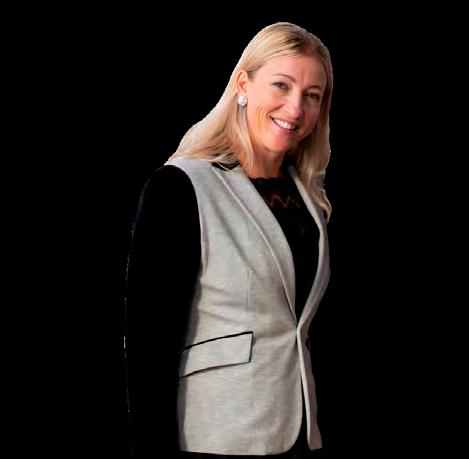
25
North America’s Leading FRESH & FROZEN TRANSPORTATION SPECIALISTS Get a quote today! Experts you can trust LTL, TL, and more Extensive Network 60+ Years in Business Reliable Equipment Flexible erbgroup.com/InsideLogistics-2023/
Photo by avigatorphotographer: freepik.com
CREATING A SUSTAINABLE LOGISTICS ECOSYSTEM
Strategies to reduce costs, enhance efficiency and strengthen partnerships

FOLLOWING A TUMULTUOUS few years for the warehousing and logistics industry, there is hope on the horizon. Global supply chain pressures have gradually eased and wholesale energy prices fell this spring, prompting many to adopt an optimistic outlook on the progress of the industry.
However, due to the impact of supply chain activities on carbon emissions, sustainability progress still hangs in the balance. It’s apparent that the UN Paris Agreement climate pledge is at real risk of being missed unless action is taken immediately.
The industry must prioritize driving down carbon emissions. Thankfully, there are many ways the warehouse and logistics sector can act cooperatively to ensure progress benefits businesses, customers and the planet.
Planning for emissions reporting
Scope 1 and 2 greenhouse gas (GHG) emissions form a large part of
many companies’ partners’ scope 3 emissions. Organizations face growing pressure to more accurately report and significantly reduce their indirect emissions. Last year, the U.S. Securities and Exchange Commission (SEC) recommended extending mandatory reporting to compel US businesses to monitor indirect emissions.
Reporting scope 3 emissions accurately can be difficult for organizations due to challenges with identifying and measuring emissions that are outside their control. When warehousing and logistics facilities and third-party service providers prioritize reducing their scope 1 and 2 emissions, scope 3 emissions are reduced for their customers, creating an ecosystem of collective responsibility to support carbon reduction throughout.
The role of the warehouse in reducing emissions



There is a clear desire to cut carbon and improve sustainability across the board. Many supply chain operators are taking steps to enhance


26 INSIDE Logistics OCTOBER 20 23 23_006948_Inside_Logistics_OCT_CN Mod: August 21, 2023 3:13 PM Print: 09/18/23 page 1 v2.5 COMPLETE CATALOG 1-800-295-5510 uline.ca TOUGH BAGS FOR TOUGH JOBS π SHIPPING SUPPLY SPECIALISTS ORDER BY 6 PM FOR SAME DAY SHIPPING SANDBAGS BULK BAGS PALLET COVERS GHG REDUCTION | By Maria Torrent-March
energy efficiency by utilizing green energy from renewable sources, increasing recycling efforts, preserving natural resources and reducing the use of diesel fuel. However, warehouses can play a role in several other ways to reduce the carbon footprint of suppliers and customers.
The demand for warehouse space is currently far outstripping availability, so providers that can offer shared usage facilities with flexible and scalable contracts for customers in energy-efficient buildings are crucial to supporting the net-zero growth of their supply chain. The construction of new buildings can now be developed in accordance with low carbon specifications, ensuring that all assets have climate resilience measures installed to directly impact the emissions profiles of all concerned.
Choosing sustainably sourced materials for all buildings is also essential. Modern construction can now use existing elements at a site, like steel or aggregate, and purchase materials from local suppliers to reduce waste and their carbon footprint.
Supply chain operatives and logistics leaders have many options available to them to support carbon reduction efforts within their warehouses, transport networks and asset management processes. It’s key they understand that cutting carbon makes good business sense; by updating operations with energy efficiency solutions, more money can ultimately be saved than the cost of the initial capital outlay.
For example, warehouses can implement programs to drive efficiencies such as re-lamping with LEDs with motion sensors, integrating thermostats for zoned atmosphere control, employing battery technology, using carbon neutral fire suppression systems, and employing reverse logistics to optimize fleets and supercharge recycling. Furthermore, installing solar panels linked directly to electric vehicle charging stations creates a sustainable loop, drastically reducing the need for grid energy.
INDEX OF ADVERTISERS
Operating solely on energy generated from 100 percent renewable sources means less reliance on fluctuating energy costs and electric logistics vehicles charged on-site are not susceptible to hikes in diesel prices and regulations changes. This allows providers to reduce overheads, mitigate organizational risks and remain resilient despite external economic pressures affecting the supply chain.
When looking at waste streams and preserving natural resources, rainwater can be harvested from the warehouse roof to be repurposed, including upkeep of the local biodiverse environment using AI-powered irrigation systems.
Recycling or reusing packaging and pallets and monitoring the performance and condition of the inventory for end-of-lifecycle, are just some of the ways that modern warehouses can innovate to tackle emissions and increase their productivity simultaneously.
Working collaboratively
The warehousing and logistics sector is in a strong lobbying position, both within government and to secure preferential rates from suppliers of energy efficient technologies. As seen with the Climate Group EV100 initiative, change can be enacted when organizations unite to make pledges on progress.
While organizations need to focus on reducing their own carbon footprint, the key to cutting carbon is collaboration. As mandatory reporting on indirect emissions draws closer, businesses will soon find themselves obligated to incorporate ESG factors into every decision.
insidelogistics.ca 27
COMPANY WEBSITE PA GE 3D Storage 3Dstoragesolutions.com 4 Automation Associates www..rfpathways.ca 7 Baumann www.baumann-sideloaders.ca 17 Cedric Millar www.cedricmillar.com 14-15 CITT www.citt.ca/community 13 CN www.cn.ca/falconpremium 31 ERB group erbgroup.com/Inside- Logistics-2023 25 Five Alarm Consulting www.fivealarmconsulting.com 28 GX Transport www.gxts.com 8 Johnston www.johnstonequipment.com 12 Konstant www.konstant.com 32 North American Steel www.naseco.ca 23 Oceanex www.oceanex.com 9 Polaris www.polaristransport.com 2 Prof4Soft www.p4warehouse.com 10 Trew North TREWautomation.com 11 Uline www.uline.ca 26
Maria Torrent-March is warehousing & logistics strategy director at Iron Mountain.
INVENTORY MANAGEMENT
It’s that time of year again when many businesses will be looking to complete their annual physical inventory counts. For some, this is just business as usual, but for others, it can be incredibly stressful, confusing, and time consuming. Why can some businesses execute this critical function flawlessly, while some struggle tremendously?
It really comes down to discipline and the importance put on inventory management within the organization all year long!
For any Inventory Management Programme to truly succeed, it must be a priority to the whole organization. This means it is a priority to everyone involved from top down to bottom up. It must become part of the thinking and decision-making processes surrounding all storage, processing, and inventory ordering decisions. It requires training, awareness, effort, and ongoing discipline to maintain a high level of integrity consistently.
What can you do that start down the road of making your inventory management programme a success now and in the future?
1 2 3 4 5
Make it clear to everyone within the business from senior leadership to floor staff that inventory management is important to the organization. To do this, we encourage regular discussions at all levels about inventory performance, inventory improvement, and most of all, senior leadership support for Inventory Management initiates. Particularly those involving investment, corrective actions, or disciplinary needs.
Dedicate resources to the inventory management function. It is common for businesses to ignore problems and issues with their inventory as secondary to receiving and shipping activities. In general, we see the primary issue here being that businesses do not dedicate resources towards the inventory management function, typically leaving receiving and shipping staff to do this. Inevitably, these resources get tied up, and cannot support inventory management as they should and therefore problems compound, and never really get addressed.
Properly documented SOPs. If a business is struggling with inventory management, we typically see that they either lack SOPs or the SOPs they have are old, outdated, and or not used at all. This creates an environment where it is difficult to train new and existing staff on the standard processes, but in addition, it becomes difficult to hold anyone accountable for their performance, as well as identify the root causes to issues in receiving, picking, or shipping.
A,B,C,D Inventory Classification and Velocity Slotting. We often see that businesses do not have a proper method for classifying their inventory into ABCD buckets and using that data to make educated decisions on how to manage their operations. In addition, even if a business has these methods in use, we typically see that they are not reviewed regularly enough to account for changes in the business profile. Typically, A SKUs represent 80% of a business overall volume, B SKUs represent the next 15%, C SKUs represent the next 5%, and lastly D SKUs represent SKUs that haven’t moved in a year. SKUs should also be velocity slotted based on this profile, to cut down labour time for all activities. These profiles should be reviewed every 90 days and actioned as appropriate.
Implement an aggressive cycle count schedule. Using ABCD methodology, cycle count SKUs based on predefined schedules that ensure you are counting the items that truly affect your business activity frequently. Be sure to review and measure results regularly and prepare root cause analysis and corrective actions for all discrepancies noted.
FOCUS ON DOING THESE 5 THINGS OVER THE NEXT 12 MONTHS, AND YOU WILL SURELY HAVE A DIFFERENT EXPERIENCE WHEN YOUR ANNUAL PHYSICAL INVENTORY COMES UP IN 2024!
OPTIMIZING WAREHOUSE CAPACITY, IMPROVING INVENTORY ACCURACY
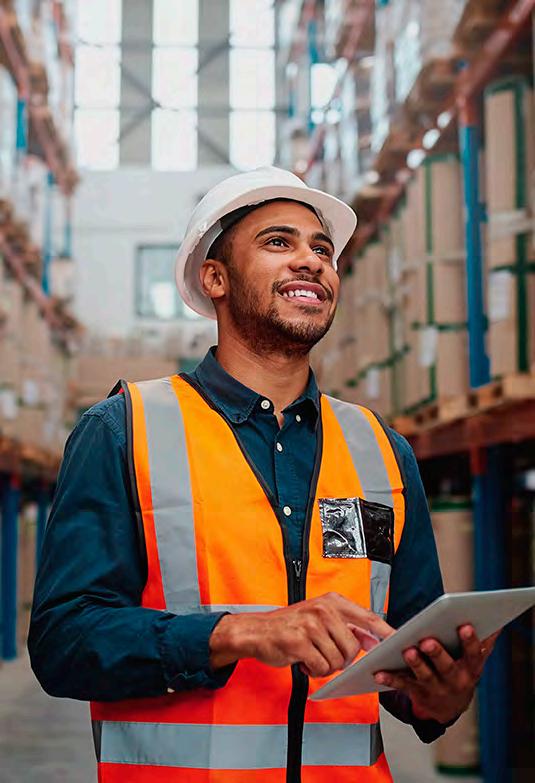

WE ARE CANADIAN DISTRIBUTION CONSULTING EXPERTS WITH OVER 24 YEARS EXPERIENCE IN:
▶Warehousing
▶Distribution
▶Transportation
▶Management
▶Supply Chain Consulting
NOT SURE WHERE TO START? GIVE US A CALL WE’RE HERE TO HELP!
ADVERTORIAL
368-999-0103 www.fivealarmconsulting.com
WHY WE NEED TO THINK LOCAL
INTERNATIONAL TRADE FIGURES published by the World Trade Organization at the end of August in its Goods Trade Barometer show a turnaround in the second quarter of 2023, driven by strong automobile production and sales.
The current barometer index of 99.1 is up from the previous one of 95.6 and follows two quarters of decline, but remains slightly below trend, though close to the 100 baseline. The Barometer is a world trade composite indicator, reflecting actual trends.
Values higher than 100 reflect above-trend international trade volumes, while values below 100 indicate a current or upcoming slowdown. Year-on-year trade was down one percent in the second quarter and down 0.3 percent quarter-on quarter.
Contributing factors included high food and energy prices caused by the ongoing Russian invasion of Ukraine, and high interest rates in advanced economies, designed to fight inflation.

Global exports and imports were down due to sluggish economic growth both in developed countries and in China, with current indicators below the 1.7 percent global international trade growth forecast originally projected for 2023.
Most of the barometer’s components were slightly below trend, including the container shipping index (99.5 percent), the raw materials index (99.2 percent), the export orders index (99.5 percent), the airfreight index (97.5 percent) and the electronics components index (91.5 percent). A surge in the exports of automotive products led that index to climb to 110.8 percent.

Indeed, increased exports of automotive products led to a strong GDP growth in Japan, while Chinese vehicle exports gained momentum in recent months. Ironically, this is happening when, at time of writing this article, the American United Auto Workers union went on strike against the big three Detroit automakers Ford, General Motors and Stellantis.
As to Canada’s international merchandise trade, our imports were down 5.5 percent in July, the strongest decline since January 2022, while our exports were up 0.7 percent,
following declines of 2.7 percent in May and 3.5 percent in June.
Our imports from the U.S. decreased 0.6 percent but our exports to the U.S. rose 1.5 percent. Our imports from the rest of the world were down 13.2 percent, with our exports down two percent. The 13-day strike at British Colombia ports that began on July 1st affected our overseas imports and exports that month.
In the U.S., exports of goods increased two percent in July, led by vehicles and parts, and industrial supplies.
Imports were also up two percent, led by consumer and household goods, pharmaceuticals and capital goods. On the Asian side, China’s international trade continued to decline, as its exports are challenged by weaker demand, both domestically and abroad, especially as North America and Europe want to depend less on Chinese imports.
The shifts taking place in world trade, in particular the nearshoring and friend-shoring policies, added to the U.S. decoupling from China, have started to translate into figures. It
was recently announced that, based on trade figures of the first half of 2023, Mexico has replaced China as the first trade partner for American companies. The U.S. imported US$236 billion worth of goods from Mexico in the first half of 2023, US$210 billion from Canada and US$203 billion from China.
In its latest World Trade Report, the World Trade Organization is calling for a renewed focus on re-globalization, as trade fragmentation across the globe threatens growth and development. But with ongoing global crises in geopolitics, public health, the environment and the economy, it seems obvious that globalization exposes countries to greater risks. We should instead work towards economic independence.
As the pandemic taught us, we need to become less dependent on outstretched supply chains and instead develop shorter, regional supply chains through reshoring and nearshoring. We need to move from lean inventories and just-in-time, and instead rebuild inventories and just-in-case stocks.
Another sign of fragmentation was seen at the recent G20 summit, organized by India. The Chinese leader was absent, which is not a good sign for international cooperation.
Another worrying element was that, at the request of China, the G20 closing declaration did not condemn the Russian aggression of Ukraine. As Russia continues to get direct or indirect support from many countries, in particular China, India, Brazil, South Africa, as well as despots in smaller African, Middle Eastern and Asian countries, the war could continue for a long time, and so will trade disruptions.
Without peace, respect for the rule of law and close international cooperation, international trade cannot prosper in an orderly fashion. And neither can environmental issues be tackled efficiently. We may unfortunately continue to go through ongoing trade disruptions, coupled with growing environment-related challenges that may not be addressed properly as long as the current geopolitics continue.
insidelogistics.ca 29 TR ADE UP DATE
CHRISTIAN SIVIÈRE runs Solimpex, and is an international trade consultant and lecturer. christian.siviere@videotron.ca
Increasing fragmentation poses a risk to global trade
EIGHT RACKING BEST PRACTICES TO PROTECT WAREHOUSE WORKERS FROM CRUSH INJURIES

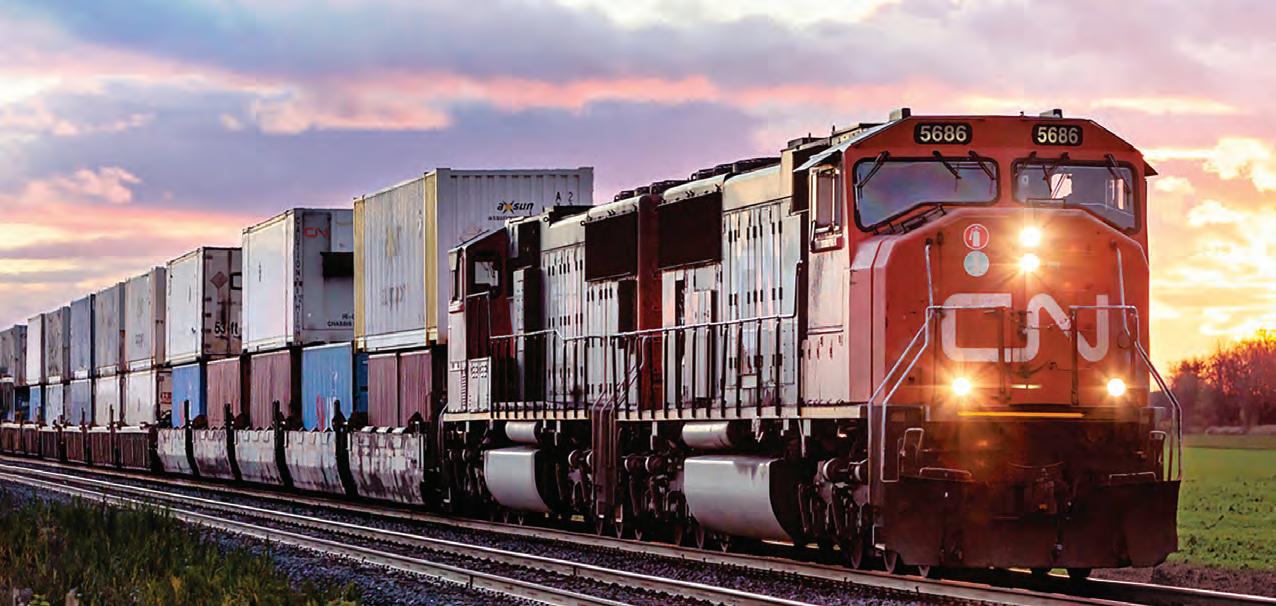
Serious injuries and fatalities can occur when objects fall from racking
WAREHOUSES AND storage facilities may not immediately seem like hazardous workplaces, but if safe storage practices are not implemented, they can be. Consider these incidents:
▶A warehouse employee is picking a product from a shelf when a pallet falls unexpectedly from the top level of the rack.
▶An employee is walking past boxes stacked in tiers when the boxes suddenly topple over.
▶An employee is found unresponsive on the ground surrounded by product.
These real incidents resulted in serious injuries to workers and, in one case, a fatality. This is why provincial and territorial governments carry out inspections of warehouse and storage facilities each year to ensure employers have the proper prevention procedures in place. Crush injuries relating to falling objects can be catastrophic to workers and to workplaces. While many workplaces carry out regular inspections of their racking systems to ensure they are not damaged, that’s not enough to prevent these types of injuries. They are related to how and where items are placed on the rack, the capacity of the racks and loads, training, and much more. Here are eight best practices when it comes to preventing these types of injuries:
1. Start with an internal audit. Review your procedures, training, and how tasks are completed to determine if your workers are at risk of injury. Pay particular attention to areas where others are working. For example, when a load is being placed on a rack, is there someone working on the other side? If so, that person could be at risk of having material pushed down on them by the load on the other side of the rack.
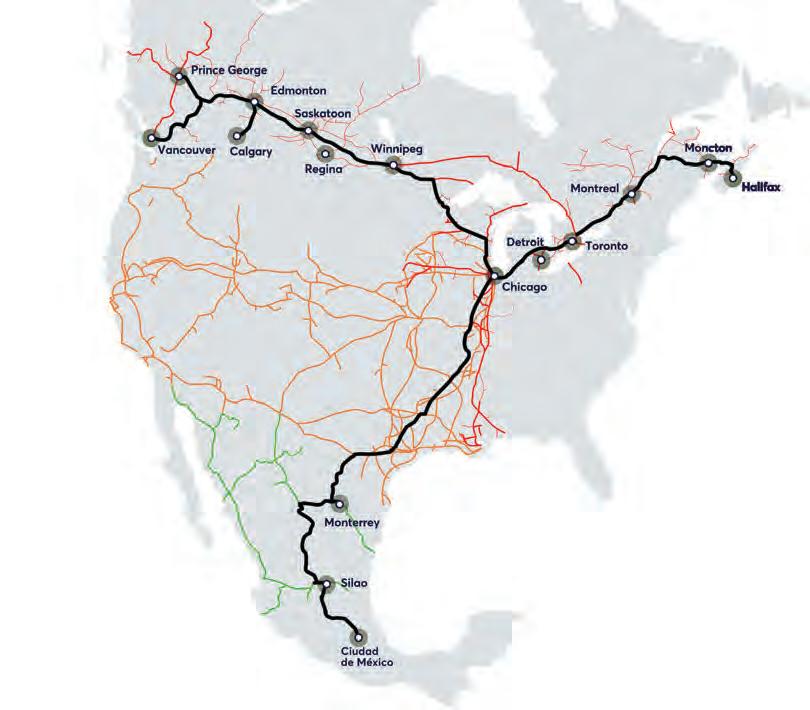
2. Use equipment that is suitable for the size, shape, and weight of the product

safety consulting services for Workplace Safety & Prevention Services (WSPS) as a Warehouse Specialist in the
you are working with. This includes both your lift truck and steel storage racks. The weight of the load should be distributed evenly on both beams to ensure there is no excessive product or pallet overhang. Items should be stored on flat, even surfaces. Understand the weight of the load and the racking capacity to prevent overloading. Remember, changing the level of the beam also affects capacity and may require a review by a professional engineer.
3. Consider installing accessories, such as wire mesh decking or safety bars across beams to temporarily stop a misplaced load from falling. It’s a small investment that could prevent a critical injury or fatality. This may be especially important when storing odd-shaped loads or pallets at high elevations with poor visibility. But be aware that the capacity of safety bars and mesh decking is typically less than beams.
4. Ensure there is a comfortable space between the load and the racking frame or adjacent items. When pallets are packed too tightly, lift truck operators are more likely to make unwanted contact with rack components, causing damage, or bumping loads and destabilizing them.
5. Always follow the manufacturer’s instructions for weight limits. If you exceed these limits on racking
systems or lift trucks, you increase the risk of someone getting injured. Be sure to train lift truck operators on how to determine the weight of the load and the capacity of the lift truck and racking. Ensure racking capacity signage is attached to the structure, and readily visible to lift truck operators – including how much weight can be safely supported on one beam level, and on the entire bay section of racking. An operator who doesn’t know this basic information has not been trained properly.
6. Review visibility hazards, such as pallet obstructions, at the ends of rows and near pedestrian walkways to determine if there’s a risk of people getting hit or crushed by mobile equipment. Keep pallet stacks lower at intersections to reduce blind spots where people or mobile equipment are moving. Reorganize workflow or layout to minimize or eliminate these risks. Consider marking the floor area where pallets must be placed, such as pallet staging areas.
7. Use pallets that are in good condition to prevent loads from becoming unstable due to pallet damage, such as broken, split, cracked or missing stringers or deckboards. Expendable pallets, which are weaker in design, should be exchanged with, or placed on, a sturdier pallet before storing on racks. Further support load stability by securing pallet loads to pallets with straps, shrink wrapping or other means.
8. Train your operators and warehouse workers on these procedures and enforce them in the workplace. General lift truck training alone is not sufficient. Also train on safe storage practices -- proper pallet placement, capacities, stacking heights, and consequences. It’s important for everyone to understand what can happen if safe storage practices are not followed.
30 INSIDE Logistics OCTOBER 20 23
SAFE T Y FIRS T
NORM KR AMER, CRSP, P.MM, provides expert, in-depth health and
GTA region.



Canada-US-Mexico intermodal service Faster. Seamless. Direct. Canadian National Railway (CN) in partnership with Union Pacific (UP) and Ferromex (FXE), presents the fastest service between Canada, the U.S. Midwest, and Mexico. With unparalleled transit times, this all-rail seamless shipping solution provides efficient, reliable, and faster service, than any other option in the market. The Falcon Premium Contact us to start shipping today! | 1-888-668-4626 | cn.ca/falconpremium

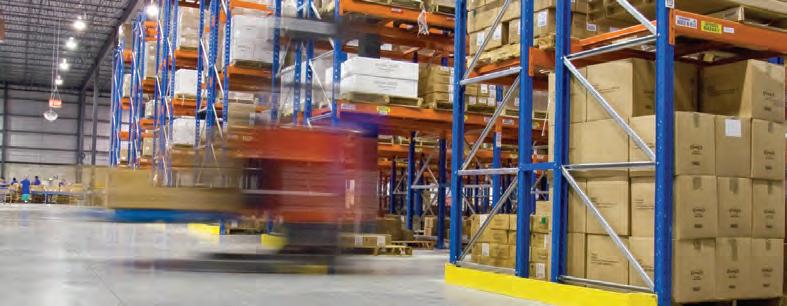

Complete Storage System Solutions Meet your partner in facilities evolution. The way consumers purchase goods has changed. That’s led to a drastic shift in the demands on your facilities. At Konstant, we’ve changed, too. We’ve evolved to offer a full range of storage, distribution and fulfillment services. So you can connect more deeply with each customer and deliver the value that sets your business apart. www.konstant.com | 1-866-202-0064 Consumers are shopping differently. Are you ready? Strong foundations. Smart evolution. CALGARY OAKVILLE DARTMOUTH OTTAWA EDMONTON TORONTO MONCTON VANCOUVER MONTREAL VAUGHAN
















































































